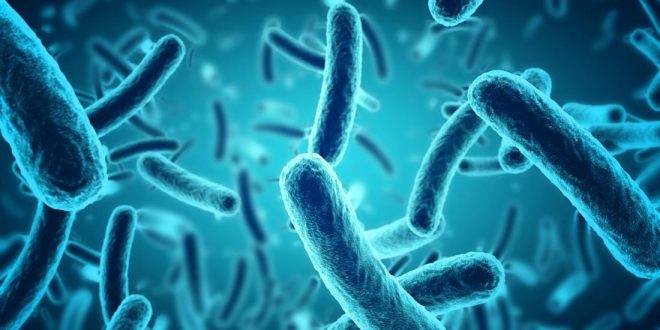Water Microbiology
Water is the vital element for every living organisms on earth. So, it’s needed to ensure safe access to clean drinking water for all as most of the important bacterial diseases are transmitted through water .
Water microbiology is the study of microorganisms like bacteria, viruses, protozoa, microscopic algae and fungi and their functional activities in water (both in marine and fresh water).
Hydro-Ecosphere or Hydrosphere
The hydrosphere contains water, which is necessary for microbial metabolism and for microbial growth hydrosphere is more suitable than atmosphere.The hydrosphere is divided into fresh and marine habitat. Water salinity based on dissolved salts Fresh water(<.05%), Brackish water (0.05-3)% , Saline water (3-5)% and Brine ( >5%).
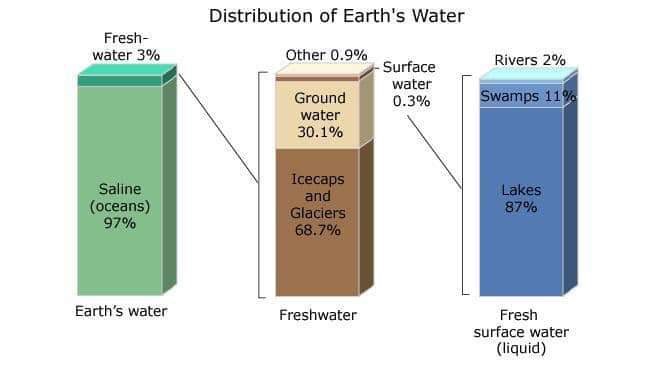
Best safe and secure cloud storage with password protection
Get Envato Elements, Prime Video, Hotstar and Netflix For Free
Best Money Earning Website 100$ Day
#1 Top ranking article submission website
The essentiality of water
Blood in our veins approximates composition of sea water.
Concept of hydrophilic and hydrophobic nature of biological molecules.
These molecules determine shape of biological molecules and thus decide the specificity of all living processes.
Essential for all living organisms Neuston
The uppermost layer of the hydrosphere , the surface microlayer , represents the interface between the hydrosphere and the atmosphere. Under quiescent conditions , form a surface film known as neuston. Some mineral nutrients and metals become enriched in the surface microlayer . Microbial numbers in the surface microlayer are often ten to a hundred fold higher than in the underlying water column.
Characteristics autochthonous neuston microbiota include algae, bacterial genera are Pseudomonas, Caulobacter, Nevskia, Hypomicrobium, Achromobacter, Flavobacterium, Alcaligenes, Micrococcus, Leptothrix.
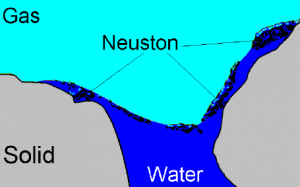
Pleuston
The uppermost layer of the marine ecosphere is the surface tension layer, where the marine ecosphere interfaces with the atmosphere. Pseudomonas various pigmented genera such as Erythrobacter, Erythromicrobium, Protaminobacter and Roseobacter are major bacterial populations. A higher proportion of pleuston bacteria have been reported to utilize carbohydrates than do bacteria in the underlying water.
Bioluminescent Bacterium
Photobacterium phosphoreum or Vibrio phosphoreum is a Gram negative bioluminescent bacterium living in symbiosis with marine organisms. It can emit bluish-green light (490nm) due to a chemical reaction between FMN, luciferian and molecular oxygen catalysed by an enzyme called Luciferase. Luciferins are a class of light emitting heterocyclic compounds typically undergo an enzyme catalysed oxidation and the resulting unusable reaction intermediate emits light upon decaying to it’s ground state.
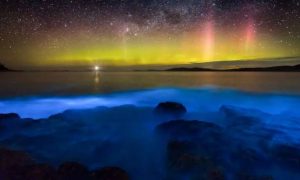
Freshwater Habitat
Freshwater habitats are classified based on their chemical and physical properties. Those with standing water, such as lakes and ponds are called lentic habitats and those with running water are called lotic habitats.
- Rivers: Rivers are characterized by flowing waters usually freshwater, flowing towards an ocean, a lake a sea, or another river.
- Lakes: Lakes are characterized by the area localized in a basin, that is surrounded by land apart from any river or other outlet that serves to feed or drain the lake.
- Estuarine: Freshwater runoff in the form of rivers and groundwater seepage interfaces with marine water is estuarine. Estuarine are more productive than either ocean or freshwater inflow because nutrients carried by rapidly flowing rivers and deposited in the river mouths or deltas.
Nutrient spiraling
Mist microbial and most microscopic organisms in rivers are attached to surfaces such as submerged rocks.
Dissolved nutrients are rapidly absorbed by these attached organisms. Nutrients don’t move with the speed of the current but exhibit a much slower movement. The cycling of nutrients in a river doesn’t occur in place, but rather nutrient cycling involves some downstream transport before a cycle is completed. The path of a nutrient can be viewed as a spiral rather than a cycle, a phenomenon known as nutrient spiraling.
River and Effluents
- Rivers often receive high amounts of effluents from industries and municipalities. Municipal sewage disposal into rivers introduces a high amount of organic compounds and oxygen concentrations are greatly depleted below municipal sewage outfalls.
Industrial effluents May also introduce toxic chemicals, such as heavy metals, which may adversely affect microbial activities and survival.
Rivers May receive high amounts of agricultural chemicals through runoff some of which act as a toxicant, adversely affecting microbial activities; others, such as fertilizers, may support uncontrolled proliferation of microorganisms.
Composition and activities of freshwater microbial communities
The microbial populations of lakes have been much more extensively studied than those of rivers. But rivers by their nature always contain higher proportions of allochthonous microorganisms.
- Members of the genera Achromobacter, Flavobacterium, Brevibacterium, Micrococcus, Bacillus, Pseudomonas, Nocardia, Streptomyces, Micromonospora, Cytophaga, Spirillum, Vibrio are reported as occurring widely in lake water.
- Stalked bacteria such as Caulobacter, Hypomicrobium and other genera are associated with submerged surfaces.
- Autotrophic bacteria are autochthonous members of the microbiota of lakes and play an important role in nutrient cycling. Photoautotrophic bacteria normally found in lakes include cyanobacteria and in anoxic zones the purple and green anaerobic photosynthetic bacteria.
- Chemolithotrophic bacteria have important roles in nitrogen, sulfur and iron cycling within lakes… Members of the genera Nitrosomonas, Nitrobacter and Thiobacillus are essential members of freshwater microbial communities.
- Microorganisms found in the sediment of freshwater lakes are usually different from those in the overlying waters.
- In shallow ponds and lakes, anaerobic photoautotrophic bacteria occur on the surface of the sediment, often conferring characteristics colour on these water bodies.
- Bacteria capable of anaerobic respiration are important members of sediment microbiota and include Pseudomonas species capable of denitrification activities.
- Within the sediment, obligate anaerobic bacteria occupy important niches. These bacteria include spore-forming Clostridium, methanogenic bacteria ( Methanobacterium) that produce methane gas and Desulfovibrio that produce hydrogen sulfide.
- Protozoa graze on phytoplankton and bacteria in aquatic habitat. Numerous genera of Protozoa are found in freshwater habitats including Paramaceum, Vorticella, Didinium, Amoeba etc.
- The flagellate protozoan Bodo is common in polluted, low-oxygen waters.
Principal ecological functions of microorganisms in freshwater environments
1. Microorganisms decompose dead organic matter, liberating mineral nutrients for primary production.
2.They assimilate and reintroduce into the food web dissolved organic matter.
3.They perform mineral cycling activities.
4. They contribute to primary production.
5. They serve as a food source for grazers.
Marine Habitats
The seawater-air interface is the habitat for the plueston, the marine equivalent of the neuston, which includes bacterial and algal inhabitants.
There are relatively high proportions of proteolytic bacteria in marine habitats as compared to freshwater or soil habitats.
Pseudomonas and various pigmented genera such as Erythrobacter, Erythromicrobium, Protaminobacter and Roseobacter are major bacterial populations.
Populations of primary producers including Cyanobacteria (Trichodesmium), diatoms (Rhizosolenia) and drifting Phaeophyta ( Sargassum) are sometimes found in the pleuston layer.
Marine microbial populations
- Marine microorganisms exhibit growth at salinities between 20 and 40 parts per thousand.
- True marine bacteria don’t grow in the absence of sodium chloride. Marine bacteria require the ions in marine waters to maintain proper membrane functions.
- Marine bacteria include small size including ultra micro bacteria.
- Most marine bacteria are gram-negative and motile.
- In deep ocean trenches, barotolerant, barophilic bacteria are important members of the autochthonous community.
- Microbial members are relatively high in nearshore, upwelling and estuarine waters.
- The highest biomass of microorganisms in marine waters is normally near the surface and decreases with depth.
Typical water quality standards
• Drinking water: No coliforms contamination acceptable.
• Recreational water: 200 fecal coliforms/100 ml.
• Fish and wildlife habitat: 5000 fecal coliforms/100 ml.
Coliform as indicator bactetria
The most common indicator bacteria for water quality assessment is coliform bacteria (E. coli). They are gram-negative bacteria, non-spore forming and anaerobic.
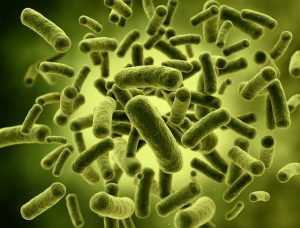
Importance of water microbiology
Water microorganisms have great importance in many ways-
• Health of humans and animals may be affected by water microorganisms.
• They provide rich nourishments for the next higher level of aquatic organisms.
Nowadays, water microbiology has emerged as one of the most important areas of applied microbiology.
Revised by
- Md. Siddiq Hasan on 26 Feb, 2021
Best safe and secure cloud storage with password protection
Get Envato Elements, Prime Video, Hotstar and Netflix For Free
 Plantlet The Blogging Platform of Department of Botany, University of Dhaka
Plantlet The Blogging Platform of Department of Botany, University of Dhaka
